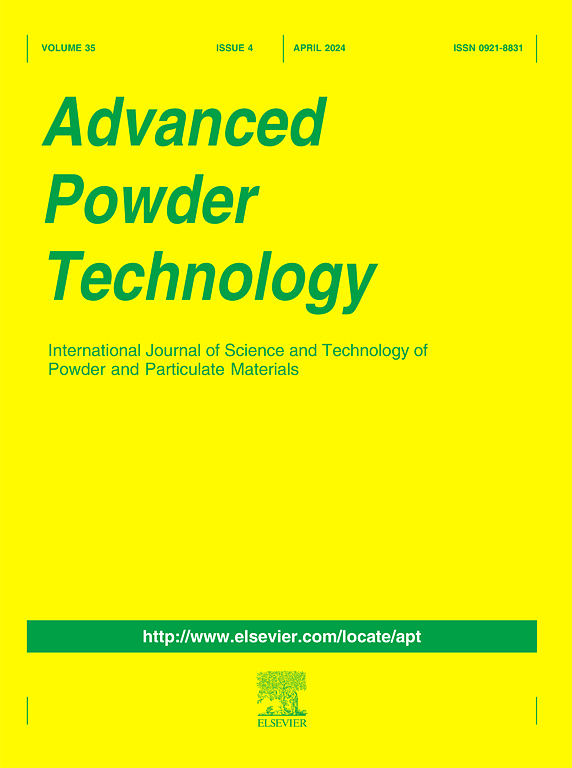Study on the surface modification and activation mechanism of lime-depressed pyrite by Cu(II) species
IF 4.2
2区 工程技术
Q2 ENGINEERING, CHEMICAL
引用次数: 0
Abstract
Pyrite is frequently encountered in conjunction with other sulfide minerals and is commonly subjected to depression by lime during mineral processing, which aim to isolate and concentrate precious minerals. In light of the continuous exhaustion of Earth’s mineral wealth, the retrieval of pyrite that has been hindered by lime deposits has emerged as a pressing concern and a top priority. This study explored the use of Cu(II) to activate lime-depressed pyrite. Scanning electron microscopy-energy dispersive X-ray spectroscopy (SEM-EDS), time-of-flight secondary ion mass spectrometry (ToF-SIMS), X-ray photoelectron spectroscopy (XPS), ultraviolet–visible (UV–vis) spectrophotometers, and contact angle tests were utilized to reveal the activation mechanism of Cu(II) on lime-depressed pyrite. These techniques were employed to analyze surface morphology and characteristics, spectral characteristics, adsorption capacity for collectors, and surface hydrophobicity. The surface morphology and spectral characteristics analyze indicated that the addition of Cu(II) led to the dissolution of hydroxyl and sulfate species on lime-depressed surfaces, and results in the formation of new copper sulfide and Fe-O-Cu species. These newly generated copper species enhanced the adsorption capacity of collectors on the pyrite surfaces, thus improving the hydrophobicity of pyrite. After Cu(II) treatment, the lime-depressed pyrite exhibited improved recoverability through flotation, ultimately achieving a peak recovery of 81.50%.

求助全文
约1分钟内获得全文
求助全文
来源期刊

Advanced Powder Technology
工程技术-工程:化工
CiteScore
9.50
自引率
7.70%
发文量
424
审稿时长
55 days
期刊介绍:
The aim of Advanced Powder Technology is to meet the demand for an international journal that integrates all aspects of science and technology research on powder and particulate materials. The journal fulfills this purpose by publishing original research papers, rapid communications, reviews, and translated articles by prominent researchers worldwide.
The editorial work of Advanced Powder Technology, which was founded as the International Journal of the Society of Powder Technology, Japan, is now shared by distinguished board members, who operate in a unique framework designed to respond to the increasing global demand for articles on not only powder and particles, but also on various materials produced from them.
Advanced Powder Technology covers various areas, but a discussion of powder and particles is required in articles. Topics include: Production of powder and particulate materials in gases and liquids(nanoparticles, fine ceramics, pharmaceuticals, novel functional materials, etc.); Aerosol and colloidal processing; Powder and particle characterization; Dynamics and phenomena; Calculation and simulation (CFD, DEM, Monte Carlo method, population balance, etc.); Measurement and control of powder processes; Particle modification; Comminution; Powder handling and operations (storage, transport, granulation, separation, fluidization, etc.)
 求助内容:
求助内容: 应助结果提醒方式:
应助结果提醒方式:


